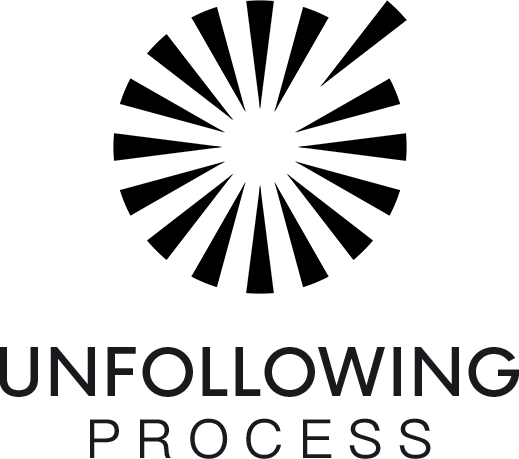
Playing Ourselves: The Curious Healing of Parts Play
Most people think of Parts Work or Internal Family Systems (IFS) as something you do in therapy—if at all. But some of the most important breakthroughs happen outside a therapist’s office.
This is where Parts Play comes in: a self-guided practice for meeting your inner voices, shifting how you relate to them, and reclaiming the driver’s seat in your own life.
That pause was such a loud silence.
They were only a few months in—new enough that everything still felt high-stakes, but familiar enough that Maya had started showing up bare-faced. It was a Sunday. They were on the floor of her forever-since-college flat, a pot of tea going cold between them.
He sat cross-legged, just… staring.
Not mean. Not even blank. Just there. Present. Peaceful. His heavy Asian lids and still mouth reminded her of a Buddha statue.
She’d just asked him, nervously, what he was thinking.
He didn’t answer. Just kept looking at her.
The moment stretched.
And suddenly, she was full of noise.
One part wanted to break the silence with a joke. Another leapt up to make him eggs. Or toast. Or maybe just smooth her dress. Another filled the quiet with doom: He’s lost interest. He’s regretting this. He’s composing a breakup speech in his head.
And one more, quieter than the rest, whispered: You shouldn’t have asked.
She considered turning off a light. Topping up her tea. Anything to break the tension.
But she stayed still.
And the longer she sat, the louder it got. Voices arguing, angling, auditioning for control.
She remembers thinking: Wow. All this, just from someone being quiet.
Later, she’d learn there wasn’t anything wrong. That pause wasn’t a warning sign. It was an opening.
The beginning of something she’d come to recognize, name, and even practice: Parts Play.
What Is Parts Play?
Maya told me about that moment years later, over coffee in her sunroom.
On the table between us were cards labeled with masking tape. One said “The Caretaker – Linda.” Another: “The Teen – Phoenix.”
“I used to think I was just anxious,” she said. “Just that and that was it. But really, I was just hanging out with this one loud part of me that I depended on way too much.”
That’s the core of Parts Play. What we call personality quirks are often just the parts of us that happen to be running the meeting.
And most of us have never even met the rest.

How Parts Play Began
Parts Play was created by Omo Voo, co-founder of Unfollowing, the company behind tools like Space for Yourself and Space for Work.
It started with a simple realization: therapy is powerful, but it doesn’t travel.
“There’s a time for therapy,” Voo says. “But I wasn’t spending most of my life in a therapist’s office. I needed something for when I was at work. In a fight. Alone in my kitchen. The moments where you’re flooded and no one’s coming to save you.”
Parts Play is that something.
Parts Play didn’t come out of nowhere. Humans have always worked with their parts—we just used different names. Spirits. Energies. Ancestors.
Now we call it Shadow Work, Grief Work, Men’s Work, Inner Child Work, Breath Work. And yes, Parts Work.
Parts Play is a new shape of something ancient—built not for crisis, but for everyday moments when you need to come back to yourself.
The idea pulls from many sources. One surprising one? Childhood development.
Voo points to the concept of “loose parts play”—where kids are given open-ended objects like blocks, rocks, or shells. They’re not told what to build. They just explore.
“Kids don’t analyze the blocks,” Voo says. “They just start putting things together. There’s something sacred about that kind of inner exploration without a fixed goal. We’ve forgotten how to do that with ourselves.”
Parts Play is about getting curious—not clinical.
Instead of fixing what feels off, you experiment with how you relate to it.
“You don’t need to become someone else,” Voo says. “You just need to reconfigure what’s already there.”
Examples of Parts Play in Action
Anne: The Pleaser Meets the Warrior
Anne, a team lead, had to tell her direct report that he wasn't meeting expectations. But every time she tried to bring it up, something in her resisted.
“I could feel all these parts inside me fighting,” she said. “One voice was like, You’re going to crush him. You’ll ruin his confidence. But another part was fed up: Why should I have to tiptoe around the truth? He needs to help me help him!”
Anne had been using Space for Work for a few months. That day, she pulled three cards: “You have to say the hard thing.” One that said, “The Pleaser.” And “The Warrior.”
She sat down and let herself become the Pleaser. She noticed how her shoulders tensed. How her stomach knotted. How much she feared conflict.
“This part would rather the whole team suffer than have one person mad at me,” she said. “It seems to come up after I’ve tried to hold the line, then it shows up and caves.”
Then she shifted. Stepped into the Warrior. Sat taller. Spoke slower.
“When I embodied the Warrior, I felt clear,” Anne said. “I wasn’t scared. I wasn’t confused. I just… knew.”
That part wasn’t cruel. It was grounded. Purposeful. Ready.
And from that place, Anne found a balance. The Pleaser helped her stay kind. The Warrior helped her stay honest.
“When I finally had the conversation,” she said, “both parts were with me. But I was driving.”

Mai: The Jealousy and the Darkness
Before Maya found peace in the silence—and before Anne led from her Warrior—there was Mai, Omo’s co-founder.
She remembers sitting in her apartment in Saigon, consumed by jealousy. Again.
“At the time, I called it my monster,” she told me.
“When that part of me took over, it consumed me. Every other part disappeared. I’d be in a rage—yelling, throwing things, completely off balance.”
And if it wasn’t her Jealousy, it was her Darkness.
“There were days I’d lie in bed with an eye mask and earphones on, just listening to my monk on repeat, trying to relax. Not talking. Not moving. Just… gone.”
Then Omo introduced her to Parts Play—and the practice they now call a Crew Meeting.
“It changed my life,” Mai said. “It gave me a way to talk to those parts instead of being hijacked by them. And once I did, I found other parts too—ones I’d never made room for.”
She left survival mode and started to expand.
“Now I’m balanced,” she said. “And I’ve made space for voices in me I didn’t even know existed.”
Living With the Crew—Not Letting Them Drive
Back in that sunlit apartment, Maya eventually learned how to sit through silence without her inner crew staging a full-blown revolt.
Not because the parts disappeared. But because she stopped giving them the remote.
“The Playful still wants to crack jokes in serious moments,” she laughs. “The Skeptic still mutters, This is dumb. But now I just nod and say, Thanks for the input. Then I decide what happens next.”
The silence isn’t loud anymore.
It’s just quiet.
Try Parts Play for Yourself
Parts Play is a self-led approach to parts work that blends curiosity, embodiment, and real-life application. You don’t need a therapist to start—just a willingness to notice, name, and meet the voices inside you.
Start here: Space for Yourself or Space for Work to meet your own inner crew.



Leave a comment
This site is protected by hCaptcha and the hCaptcha Privacy Policy and Terms of Service apply.